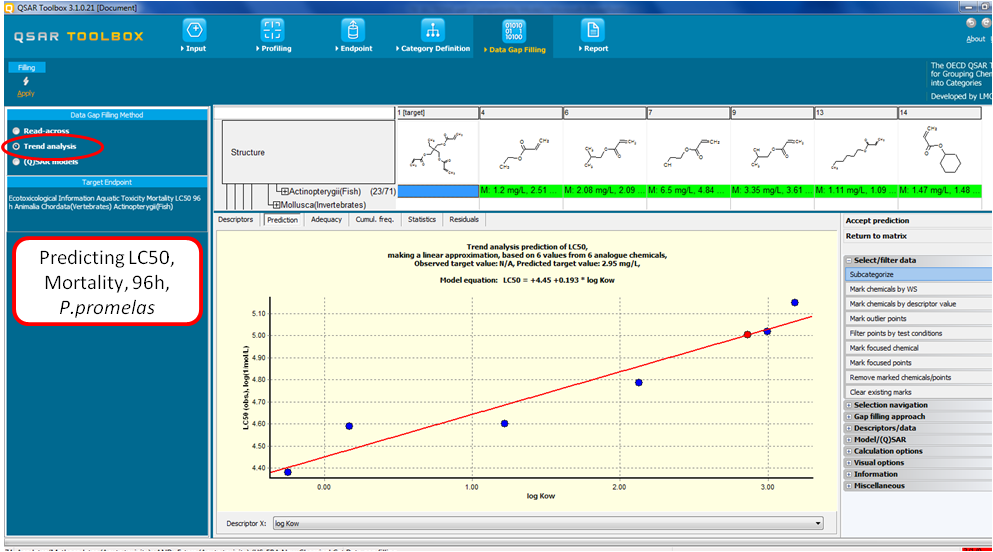Data gap filling
1. Functionalities for Read-across, Trend analysis and use of external (Q)SAR models.
2. Applying subcategorization during data gap filling.
3. Filtering chemicals by structure QA, parameter
ranges and test conditions.
4. Using experimental instead of calculated data (e.g., logKow, Sw, etc.), in read-across.
5. Predicting mixtures toxicity.
6. Using Tautomerism in read-across.
7. Saving derived (Q)SARs:
a. In Toolbox environment (building
automatically QMRF)
b. As profiling categories
8. Import/Export of derived (Q)SAR models.
9. Export of Toolbox predictions to IUCLID5 through:
a. i5z files
b. Web Services
10. Deriving multiparametric QSARs
11. Applying AOP for skin sensitization
Supporting materials
Getting Started (pages 35-43)
pdf
Getting Started Quick
Reference
pdf
Guidance how to use experimental
instead of calculated data pdf


